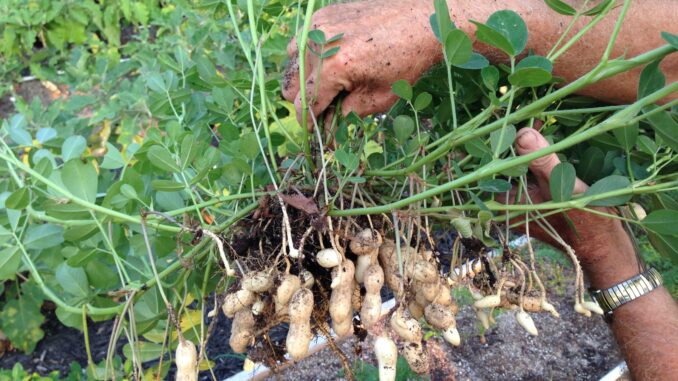
Groundnuts, also known as peanuts, are a popular and nutritious snack that can also be used in cooking. Growing groundnuts is relatively easy, and it can be done in a variety of climates, from tropical to temperate. Here are the steps for planting and growing groundnuts.
1. Choose a planting site.
Groundnuts require a well-drained soil with a pH between 6.0 and 7.0. They also need a warm, sunny location. Choose a spot that gets plenty of direct sunlight and is protected from strong winds.
2. Prepare the soil.
Groundnuts prefer a soil that is loose, friable, and rich in organic matter. Before planting, loosen the soil to a depth of at least 6 inches. Remove any rocks, roots, or debris, and mix in compost or well-rotted manure.
3. Plant the seeds.
Groundnuts can be planted directly into the soil or started indoors and transplanted later. If planting directly into the soil, sow the seeds 1 to 2 inches deep and 6 to 8 inches apart. If starting indoors, plant the seeds in seedling trays and transplant them after the last frost.
4. Water regularly.
Groundnuts require regular watering to establish a strong root system. Water deeply once or twice a week, depending on the weather and soil moisture. Avoid overwatering, as this can lead to fungal diseases.
5. Fertilize.
Groundnuts benefit from regular applications of nitrogen fertilizer. Apply a balanced fertilizer at the time of planting, and again when the plants begin to flower.
6. Weed regularly.
Weeds can compete with groundnuts for water and nutrients. Keep the planting area weed-free by pulling or hoeing regularly.
7. Harvest.
Groundnuts are ready to harvest when the leaves turn yellow and the pods start to dry. Carefully dig up the plants and shake off any loose soil. Hang the plants in a well-ventilated area to dry for several weeks. Once dry, remove the pods from the plants and store in a cool, dry place.
Groundnuts are a relatively low-maintenance crop, but there are a few pests and diseases to watch out for:
1. Aphids: These small insects can suck the sap from the leaves and stems, causing stunted growth and yellowing. Control aphids by spraying the plants with a strong stream of water or using an insecticidal soap.
2. Leaf spot: This fungal disease can cause yellow spots on the leaves, which can lead to defoliation and reduced yields. Control leaf spot by removing infected leaves and applying a fungicide.
3. Nematodes: These microscopic worms can damage the roots, causing stunted growth and reduced yields. Control nematodes by rotating crops and planting resistant varieties.
In summary, growing groundnuts is a relatively simple process that requires well-drained soil, regular watering, and some fertilization. With a little care and attention, you can enjoy a bountiful harvest of this delicious and nutritious snack.